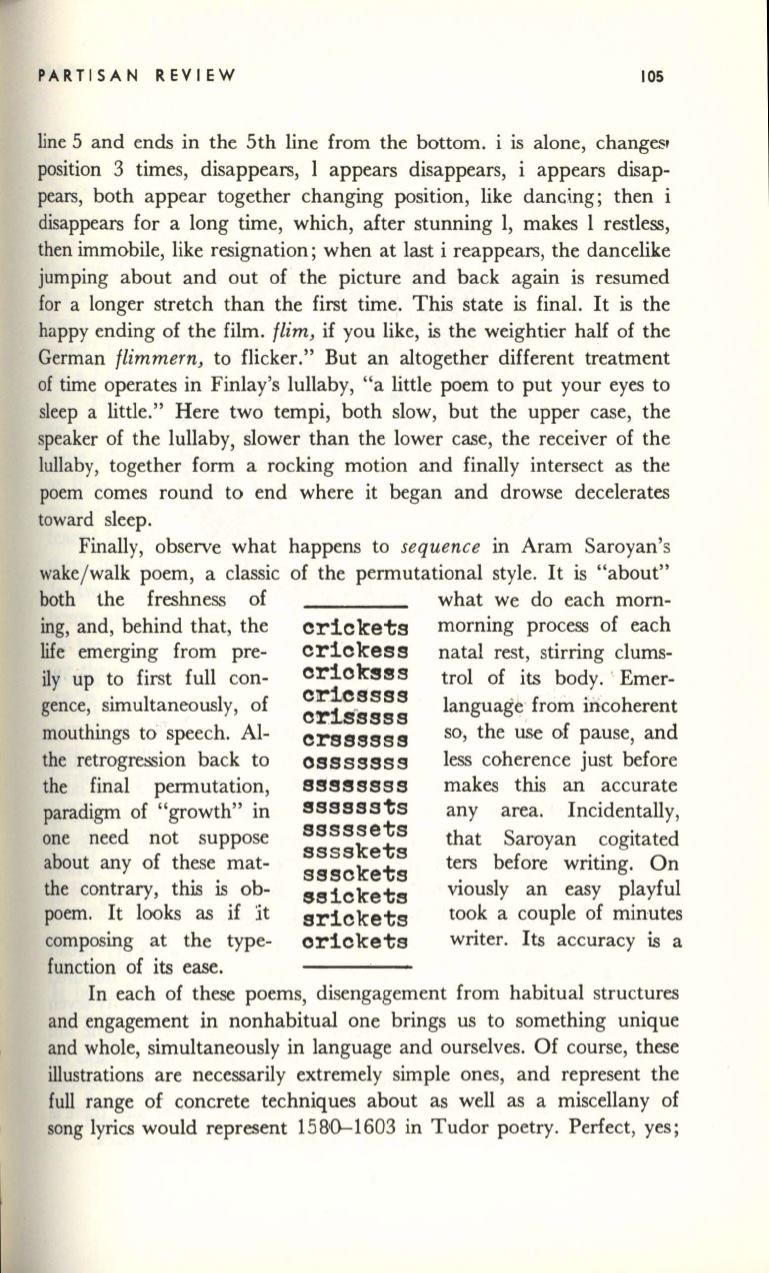
PARTISAN REVIEW
105
line 5 and ends in the 5th line from the bottom. i is alone, change8'
position 3 times, disappears, 1 appears disappears, i appears disap–
pears, both appear together changing position, like danclng; then i
disappears for a long time, which, after stunning 1, makes 1 restless,
then immobile, like resignation; when at last i reappears, the dancelike
jumping about and out of the picture and back again is resumed
for a longer stretch than the first time. This state is final.
It
is the
happy ending of the film.
flim,
if you like, is the weightier half of the
German
flimmern,
to flicker." But an altogether different treatment
of time operates in Finlay's lullaby, "a little poem to put your eyes to
sleep a little." Here two tempi, both slow, but the upper case, the
speaker of the lullaby, slower than the lower case, the receiver of the
lullaby, together form a rocking motion and finally intersect as the
poem comes round to end where it began and drowse decelerates
toward sleep.
Finally, observe what happens to
sequence
in Aram Saroyan's
wake/walk poem, a classic of the permutational style.
It
is
"about"
both the freshness of
what we do each morn-
ing, and, behind that, the
life emerging from pre–
ily up to first full con–
gence, simultaneously, of
mouthings to speech. AI–
the
retrogre~ion
back to
the final permutation,
paradigm of "growth" in
one need not suppose
about any of these mat–
the contrary, this
is
ob–
poem. It looks as if it
composing at the type–
function of its ease.
crickets
crickess
cr10ksss
cr1cssss
crisssss
crssssss
osssssss
ssssssss
ssssssts
sssssets
sssskets
sssckets
ssickets
srickets
orickets
morning process of each
natal rest, stirring clums–
trol of its body. ' Emer–
language from incoherent
so, the use of pause, and
less coherence just before
makes this an accurate
any area. Incidentally,
that Saroyan cogitated
ters before writing. On
viously an easy playful
took a couple of minutes
writer. Its accuracy
is
a
In each of these poems, disengagement from habitual structures
and engagement in nonhabitual one brings us to something unique
and whole, simultaneously in language and ourselves. Of course, these
illustrations are necessarily extremely simple ones, and represent the
full range of concrete techniques about as well as a miscellany of
song lyrics would represent
158.0-1603
in Tudor poetry. Perfect, yes;


